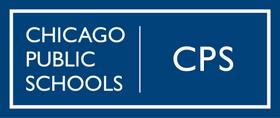Many of the students in Detroit Public Schools live below the poverty line, which means they qualify for free meals at school. However, some will skip those free meals to avoid the stigma of a “low-income” student, according to some school officials. To combat the problem, the city will take part in a pilot program that offers free meals to all students in Detroit Public Schools, beginning in the upcoming school year.
U.S. Department of Agriculture Community Eligibility Option Program
The Community Eligibility Option Program introduced by the U.S. Department of Agriculture is designed for schools in high-poverty areas, allowing them to provide free breakfast and lunch to all students and eliminating the need for excessive paperwork.
“Community eligibility is a great way for schools to cut through burdensome red tape for themselves and low-income families so that children in high-poverty areas have access to the nutrition they need to learn and thrive,” Agriculture Under Secretary Kevin Concannon stated in a press release on the USDA website. “Schools will benefit from reduced paperwork, parents will not have to fill out duplicative forms, and children in need will get better access to healthy school meals.”
The USDA selected three states to launch the pilot program during the 2011-2012 school year - Michigan, Illinois, and Kentucky - according to a report at ABC12. Detroit is the only city in Michigan that has officially signed on with the program. However, other school districts in the state can qualify if they have 40 percent of their student populations currently receiving public assistance.
Fighting Hunger to Improve Education
The program is part of President Obama’s Healthy, Hunger-Free Kids Act, which was enacted last year. According to the Detroit News, the child nutrition bill currently provides free and reduced-price meals to students who qualify, which totals about 31 million children nationwide. The program would receive an additional $4.5 billion in new funding over the next 10 years to fund this reauthorization of the bill.
Not everyone is happy with this new use of taxpayer dollars. Michael Van Beek, director of education policy at the Mackinac Center for Public Policy, told Detroit News, “I think there is a question if this is a good use of taxpayer money. Under this program, it appears we would be subsidizing school lunches and meals to students who currently don’t qualify under the federal program.”
However, in a city like Detroit, where more than three-fourths of students qualify for free food, the stigma attached to free lunch eligibility is a very real one. Mark Schrupp, DPS Chief Operating Officer, told the Daily Journal, “One of the primary goals of this program is to eliminate the stigma that students feel when they get a free lunch, as opposed to paying cash. Some students would skip important meals to avoid being identified as low-income. Now, all students will walk through a lunch line and not have to pay. Low-income students will not be easily identifiable and will be less likely to skip meals.”
Aaron Lavallee, the U.S. Department of Agriculture spokesman, agrees that the shame of free lunch keeps many students from getting the nutrition they need at school. Lavallee told the Detroit News, “We’ve worked very hard to reduce the stigma. We’re seeing a lot of working-class families who’ve had to turn to free lunches to feed their children. A lot of these kids are getting the bulk of their calories at school, so these programs are very important.”
This video explains in detail how the Healthy, Hunger-Free Kids Act works.
How the Program Works
To qualify for the new program, districts must show that at least 40 percent of their students are currently receiving free lunches. To qualify for the free-lunch program during the 2009-2010 school year, families needed annual incomes of $28,665 or less. That figure put them at or below 130 percent of the current poverty level, which was the criterion for qualification.
During the fiscal year 2010, more than 197 million school meals were served in the state of Michigan. Of that number, 137 million qualified as either reduced-cost or free, according to the Department of Education, as reported in Detroit News. The federal government spent $338 million in free or reduced-rate lunches in the state during that same time frame, while the state spent more than $30 million.
Under the new program, districts will receive federal reimbursement according to a precise formula. For districts where 62.5 percent or more of students qualify for free lunches, the reimbursement by the federal government would be 100 percent. Districts that fell below that threshold would be responsible for coming up with at least some of the funding for the program on their own.
This video offers another take on the Community Eligibility Option Program.
Plans for Expansion
So far, Detroit is the only school district in Michigan that has officially joined the pilot program. Other districts have until the middle of September to make their decisions. Marla Moss, assistant director of child nutrition programs for the Michigan Department of Education, told Detroit News, “We know Detroit is in and we’ll know from more schools by the middle of September. We think this is a good thing. We’re excited about it. It will be good for the kids.”
The free-for-all program option is scheduled to be phased in gradually over the next few years. The USDA plans to add four more states in 2012 and an additional four states the following year. By 2014, the program will be open to all eligible school districts across the country, ensuring kids who desperately need nutrition to learn will be able to receive at least a portion of their daily requirements at school.
Questions? Contact us on Facebook. @publicschoolreview















